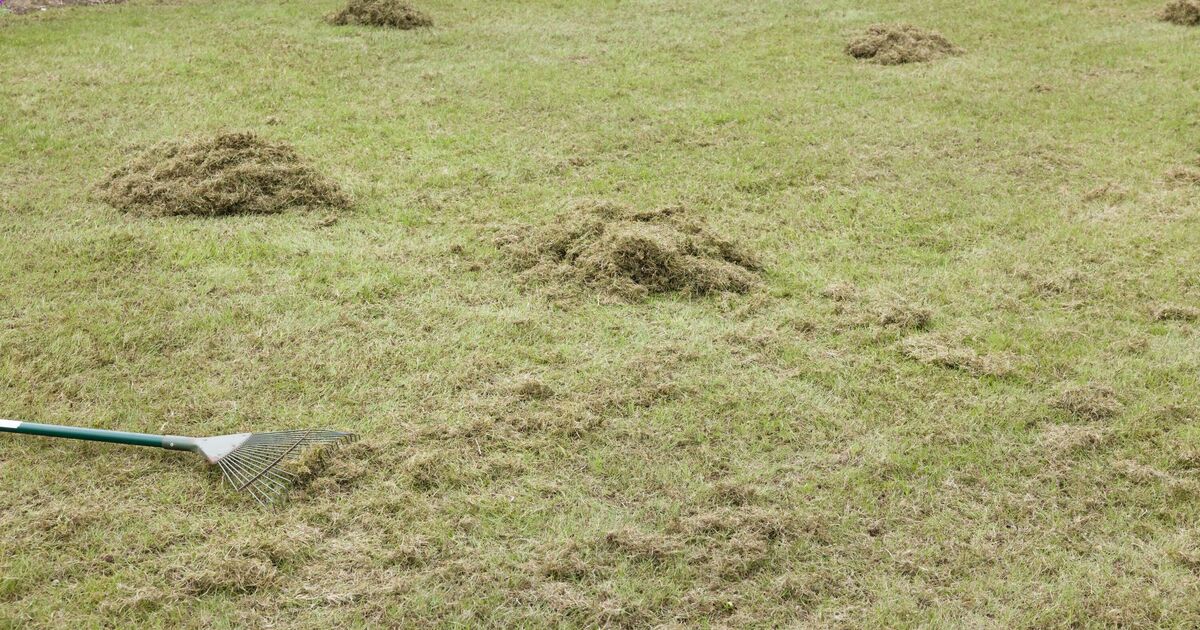Moss can grow in almost any type of soil and spread quickly through garden lawns, distracting from the lush green grass.
Often uneven and spongy-looking, moss is a nuisance for several reasons, including causing the grass to die off in the summer and resulting in bald or earthy patches.
But before turning to strong chemical-based moss killers, gardening experts at the Lawn Association have urged gardeners to consider a different approach.
They suggested scarifying, a process that revitalises grass and promotes healthier growth. The Royal Horticultural Society endorses this gardening task.
The RHS said scarifying is best done in October or early November “when the grass is growing strongly” and the conditions are mild and damp.
Scarifying removes the thatch layer, which is the brown material that can build up under grass blades.
This layer can prevent water and nutrients from reaching the roots and can encourage moss growth. Scarifying also aerates the lawn, allowing air and water to flow through the soil.
The Lawn Association team explained how this process removes unwanted spongy growth: “When it comes to scarification, you are effectively pruning your lawn.
“Through this procedure, you are not trying to dominate nature, but instead, giving it a helping hand to work at its best by controlling the thatch, which in turn will probably mean you never have moss.”
The Lawn Association continued: “By regularly aerating your lawn, you allow rainwater to run down into the soil and away from the surface, giving the moss spores less chance to germinate.”
To scarify your lawn, start by mowing it to a shorter length. Next, gently remove the moss thatch using a spring-tined rake or a mechanical scarifier tool.
Work in one direction and then turn 90 degrees to cover the entire area. It is important to remove as much moss and debris as possible during the raking process to expose bare soil.
These bare patches will determine where your seeds need to be when over-seeding. Any debris left behind creates a barrier between seed and soil, reducing the chances of the seed rooting and growing.
After scarifying, applying an autumn lawn feed rich in potassium and phosphorus is beneficial to encourage root growth and hardiness and should be done before overseeding. Overseeding any bare patches is the final step in helping your lawn to recover and thrive.
Gardening experts agree that scarifying in autumn improves water penetration and nutrient absorption, making your lawn more resilient to drought and extreme weather.
Though putting extra effort into garden grass just before winter seems odd, the benefits can be reaped next summer. You’ll be rewarded with a healthier, more attractive garden next year.










